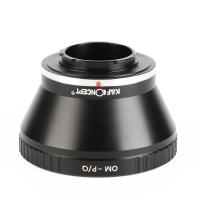What Does A Scanning Electron Microscope Show?
Understanding Scanning Electron Microscopes: What They Reveal About the Micro World

The Scanning Electron Microscope (SEM) is an indispensable tool in the world of scientific research and industrial applications. With its ability to produce detailed, high-resolution images of surfaces at the microscopic level, it offers insights into materials, biological specimens, and other objects that are invisible to the naked eye. In this article, we will delve into what a scanning electron microscope reveals and how it works, highlighting its critical role in modern science and technology.
What Is a Scanning Electron Microscope?

A scanning electron microscope is a type of electron microscope that uses focused beams of electrons to scan a sample. Instead of relying on light, like conventional optical microscopes, SEMs employ a stream of electrons to interact with the atoms of the sample surface. This interaction generates various signals that are collected and used to form an image. The high energy and short wavelength of electrons enable SEMs to achieve much greater resolution than optical microscopes, allowing scientists to view extremely fine details of objects at magnifications ranging from 10x to over 1,000,000x.
Unlike conventional light microscopes, SEMs do not produce images based on light passing through a specimen. Instead, they produce images by scanning a focused electron beam across the surface of a specimen, detecting various interactions between the electron beam and the sample, such as secondary electrons, backscattered electrons, and X-rays. These interactions provide a variety of information about the sample's surface morphology, composition, and topography.
What Does a Scanning Electron Microscope Show?

SEM provides a wealth of information about the surface of a sample. The major features revealed by SEM include:
1. Surface Topography:
The SEM can create highly detailed images of the surface structure of a specimen. These images display the fine details of surfaces in three dimensions, often showing features such as texture, roughness, grooves, cracks, and edges with astonishing precision. For example, it can show the surface structure of a metal, the shape of plant cells, or the intricate patterns of insect wings.
2. Morphological Details:
SEM is exceptional at visualizing the shape, size, and arrangement of objects at the micro- and nanoscale. This is particularly useful in the fields of materials science and biology. For instance, SEM can reveal the detailed morphology of nanoparticles, the intricate arrangement of cells in tissues, or the precise shape of bacteria and viruses.
3. Elemental Composition:
By detecting X-rays emitted from the sample when it interacts with the electron beam, SEM can be coupled with Energy Dispersive X-ray Spectroscopy (EDS) or Energy Dispersive X-ray Analysis (EDX), techniques that allow for elemental analysis. This provides information on the chemical composition of the sample, including which elements are present and their relative concentrations. For instance, SEM with EDX is often used to study alloy compositions, identify contaminant elements, or investigate the presence of trace metals in a sample.
4. Material Properties:
SEM is also effective at revealing the material properties of samples, especially their surface hardness and texture. The contrast seen in SEM images can provide clues about material homogeneity or structural integrity. For instance, researchers may use SEM to examine the fractography of a material after it has fractured, helping to understand the failure mechanisms.
5. Porosity and Pore Structure:
SEM can provide detailed imaging of the porosity of a material, which is essential in fields like geology, pharmaceuticals, and battery technology. SEM is used to visualize the internal pore structure of materials such as ceramics, polymers, and geological samples, helping engineers design more efficient materials.
6. Crystal Structure:
SEM can offer insights into the crystal structure of materials. While electron diffraction techniques are typically used for full crystallographic analysis, SEM images can still reveal features such as grain boundaries, crystal orientations, and the presence of polycrystalline regions.
7. Surface Contamination and Defects:
The high resolution of SEM makes it an excellent tool for detecting surface contaminants, defects, or corrosion. SEM can be used in quality control to ensure that components or products meet specific standards by checking for defects like scratches, pores, or any signs of corrosion.
8. Microorganisms and Biological Samples:
SEM plays a critical role in microbiology and medicine. It is used to visualize bacteria, viruses, fungi, and other microorganisms in great detail. For instance, SEM allows scientists to examine the surface structure of bacteria, revealing the shape, size, and surface characteristics, which are crucial for understanding how they interact with the environment or host organisms.
9. Nano-Scale Features:
The ability of SEM to operate at high magnifications makes it ideal for examining features at the nanoscale. This includes the detailed structure of nanoparticles, nanomaterials, and thin films. This is particularly important in fields such as nanotechnology, where understanding the physical characteristics of nanoscale structures can significantly influence the design and application of these materials.
10. Three-Dimensional Imaging:
One of the powerful features of SEM is its ability to generate images with three-dimensional depth, providing a much clearer view of the sample's surface. This is achieved by scanning the electron beam in a raster pattern across the sample, with the intensity of the signals varying according to the surface features. SEM images can often resemble topographic maps, showing the height variations and contours of the surface.
How Does a Scanning Electron Microscope Work?

The functioning of a scanning electron microscope is based on a series of carefully controlled processes:
1. Electron Gun:
The process starts with an electron gun, which generates a beam of electrons. These electrons are accelerated using high voltage and focused into a tiny, fine beam.
2. Scanning the Sample:
The focused electron beam is directed at the surface of the sample. The sample is placed in a vacuum chamber to avoid interference from air molecules, which would scatter the electron beam. The electron beam scans the surface of the sample in a raster pattern.
3. Interaction with the Sample:
As the electron beam strikes the sample, various interactions occur. Some electrons are ejected from the sample’s surface (secondary electrons), while others may scatter or penetrate deeper, depending on their energy. The interaction of the electron beam with the sample generates signals that are detected by various detectors.
4. Signal Detection:
The primary types of signals detected in SEM include secondary electrons, backscattered electrons, and X-rays. The detected signals are used to generate an image or provide chemical composition information. Secondary electron images reveal surface topography, while backscattered electrons can show variations in atomic number (helpful for elemental composition).
5. Image Formation:
The detected signals are processed by the SEM’s computer system to produce an image. These images are highly detailed and have a depth of field that provides a three-dimensional appearance.
6. Analysis Tools:
SEMs are often equipped with additional analytical tools like EDX, which provides elemental analysis. In some cases, Electron Backscatter Diffraction (EBSD) is used to study the crystallographic structure of materials.
Applications of Scanning Electron Microscopes
The power and versatility of SEMs make them essential tools in various fields, including:
- Materials Science: SEM is used extensively to study metals, polymers, and composite materials, as well as to analyze defects, fractures, and surface coatings.
- Biology and Medicine: SEMs help in the study of cellular structures, bacteria, viruses, and tissue samples. They are crucial in cancer research, microbiology, and medical diagnostics.
- Nanotechnology: SEMs are indispensable for observing the properties of nanomaterials, nanostructures, and nanoparticles, enabling researchers to design and test new materials at the nanoscale.
- Semiconductor Manufacturing: In semiconductor fabrication, SEMs are used to inspect circuit patterns, verify quality, and locate defects in chips and microelectronic devices.
- Geology: SEM helps geologists examine minerals, rocks, and fossils, providing insights into their structure and composition.
Scanning Electron Microscopy is a powerful technique that reveals much more than just the surface of a sample—it provides detailed insights into the structure, composition, and behavior of materials at the microscopic and nanoscale levels. Whether used in materials science, biology, electronics, or geology, SEM continues to be an invaluable tool, pushing the boundaries of our understanding of the micro and nano world.
Its high resolution and depth of analysis make it a key player in both scientific research and industrial applications, allowing scientists and engineers to tackle complex problems in ways that were once unimaginable. With advancements in SEM technology, the potential for discovering new materials, improving industrial processes, and advancing medical research continues to grow.










































There are no comments for this blog.